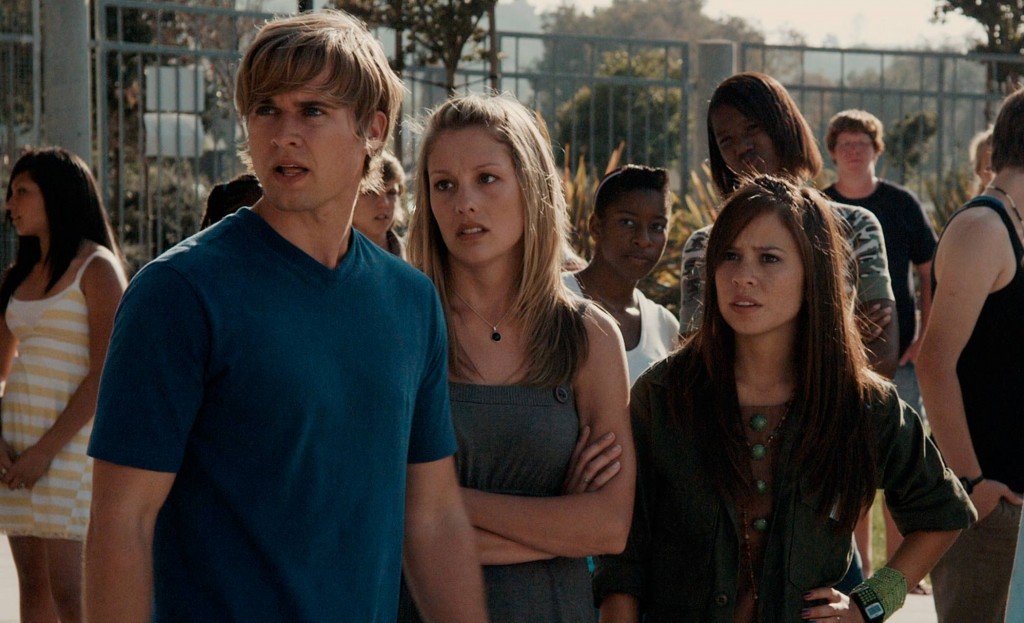“To Save a Life” Has Inspiring Message Teens May Ignore

From left: Randy Wayne, Deja Kreutzberg and Kim Hidalgo star in "To Save a Life." Photo by C. Clifford Jones of Samuel Goldwyn Films.
They are social workers at Washington, D.C.’s Hamilton Center, a special education school serving grades one through eight. Hamilton Center is part of District of Columbia Public Schools.
Maurice and Webster sat down and watched an advanced screening of “To Save a Life,” a drama about teen suicide, depression, pregnancy and other issues. The film will premiere nationwide Jan. 22. SocialWorkersSpeak.org asked Webster and Maurice about their impressions of the film:
Q: Do you think the movie does a good job depicting the serious issues social workers must deal with in school settings?
Webster: Some of the issues in the movie are valid. In dealing with urban children often family dysfunction is the thing that causes suicides. We saw some of that in the film with the father not having a healthy relationship, communication-wise, with his son as well as the peer pressure that is pervasive among teenagers today. This is probably one of the most prominent issues that cause kids to have low self esteem and impacts on suicide.
Maurice: I think the movie very well depicted events that are taking place as we speak. The emotional stability of young people varies from the environment from which they come from.
Q: On a scale from one to 10, how would you rate “To Save a Life”?
Maurice: From my vantage point, viewing it through the eyes of a person who is a clinician, it was like an eight or nine. But I say if you’re trying to get people in the age range it’s depicting to say, “How can we change our behavior in how we deal with our peers in order not to contribute to the pressure that makes another person that age want to commit suicide,” it would probably be low on the totem pole because they don’t even see that yet. And to transmit it to them, at least through this kind of medium, it would probably be a challenge for them to sit and listen.
Webster: I would say depending on the population or the demographic that you are aiming this movie at, I would give it a nine. This drama had a great message but was slow on some levels. Some kids I think it would greatly impact them — kids that have a religious bent or focus because it had religious overtones.
Q: Do you believe the religious overtones will make it difficult to market this film or turn off some viewers?
Maurice: The society we live in, for the most part, wants to have that be separate. So that’s why marketing it is going to be challenge if it’s going to keep that (message). Unless it’s targeting the population of people who would be okay (with a faith-based situation). But in general I think a lot of people would shy away because…
Webster interjects: …because it’s proselytizing.
Maurice: Even though they don’t say a particular religion most people — a lot of people in our society — want to fade away from that.
Webster: I agree with Max. They (teenagers) may have some difficulty in just accepting when the word God is interjected although I had no problem with it because I view myself as a Christian. But when you talk about marketability it may present some issues for some people based on religion.
How will teenagers react to the film?
Maurice: They are not going to get that message. At least most of them will not in the manner depicted here. Even though there is almost no other way to present it. They have to get it in a young person’s parable form — in a quick pace. And then maybe after it’s shown to them question them about what are some of the messages that they took from it.
Webster: That’s what I was alluding to earlier when I talked about kids in an urban setting. This may not be a movie that they can relate to because of the context of the movie. The setting is more in a suburban setting. Demographic wise the children are upper middle class white kids with a sprinkling of minorities in the movie. Although depression is a major issue across all demographic and racial boundaries the context in which it was placed a lot of kids I work with in an urban setting may not relate to it. But it will be a great movie that is well received in a rural setting, private schools, or a suburban setting.
To learn more about how social workers help children, teenagers and families in crisis visit the National Association of Social Workers’ “Help Starts Here” Kids & Families Web page by clicking here.
Advertisement
Leave a Comment
You must be logged in to post a comment.


